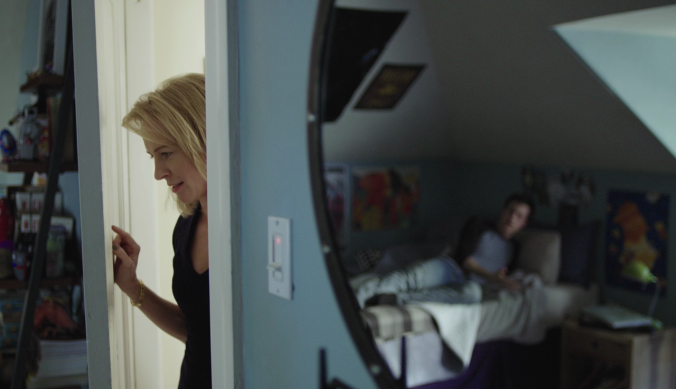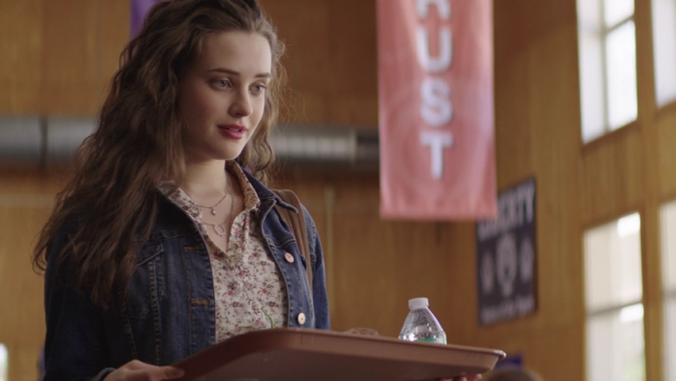 One of the most talked about shows on Netflix at the moment is ‘13 Reasons Why‘, a serial about Clay Jensen, a teenager who journeys to uncover the truths behind his friend Hannah Baker’s suicide and the subsequent passing around of her ‘suicide note’, 13 tapes exploring the reasons behind her actions. The show is based on the novel ‘Thirteen Reasons Why’ by Jay Asher. The discussion around the show’s effect on its viewers and its commentary on real life has accomplished much of the show’s purpose to not only entertain but to bring awareness to the potential fruit of bullying and assault. My addition to the conversation will be focusing more on some particulars about the presentation of the story which may either encourage the viewer to keep watching or dissuade them from it all together. To put it simply, if you’re going to handle such a sensitive topic then you have to make sure it’s being done properly. At the outset, 13R starts out shaky but eventually it redeems itself, forming a cohesive and emotionally layered story instead of the cheap cliche-fest that it was in danger of being.
One of the most talked about shows on Netflix at the moment is ‘13 Reasons Why‘, a serial about Clay Jensen, a teenager who journeys to uncover the truths behind his friend Hannah Baker’s suicide and the subsequent passing around of her ‘suicide note’, 13 tapes exploring the reasons behind her actions. The show is based on the novel ‘Thirteen Reasons Why’ by Jay Asher. The discussion around the show’s effect on its viewers and its commentary on real life has accomplished much of the show’s purpose to not only entertain but to bring awareness to the potential fruit of bullying and assault. My addition to the conversation will be focusing more on some particulars about the presentation of the story which may either encourage the viewer to keep watching or dissuade them from it all together. To put it simply, if you’re going to handle such a sensitive topic then you have to make sure it’s being done properly. At the outset, 13R starts out shaky but eventually it redeems itself, forming a cohesive and emotionally layered story instead of the cheap cliche-fest that it was in danger of being.

Dylan Minette as ‘Clay Jensen’
First Impressions
To be frank, my first impression of the ‘13 Reasons Why’ (13R) didn’t convince me that it could be a hard-hitting drama that would keep both my heart and mind engaged. I was vaguely aware of the book and its contents but I wasn’t necessarily drawn to it. When I heard the buzz around the show I was reluctant to join in and at first I thought that my assumption was correct in saying it wouldn’t be an enjoyable experience. That being said, I should make it clear that it was not necessarily the subject matter that turned me off from the show, but more the execution. The dialogue in the first few episodes is cringey almost to the point of offense; it is by far the most egregious negatives of the show.

Giorgia Whigham as ‘Obvious Exposition’
I don’t know what it is about the writing for this show but it does not do casual well. It seemed to vacillate between Exposition with a Capital ‘E’ and ham-handed attempts at teenage witticism which grated on my nerves. In the scope of the whole show, it could be argued that the writers were trying to shore up the underlying backstory and setup for the later and unmistakably heavier content of the show but it could have been done with a bit more finesse. (Also, I call bullshit because with 50+ minutes per episode those awkward lines could definitely have been cleaned up.)
I was especially irked at the clumsiness of the dialogue at the beginning because, considering the sensitive subject matter, I thought it would be more in the interest of the plot to have the audience empathizing with the characters from early on, not being turned off by clunky dialogue, which then seemed to inform the acting for the characters. Initially, I found Hannah Baker unlikable and too pretentious for words and the other characters caricature-like and one-dimensional–most of all Tony, who pulls of his Bruno Mars/Yoda impression with flying colours. Clay Jensen, our protagonist, was the only good thing going for the show, in all his Logan Lerman look-alike glory. Dylan Minette gives a fantastically natural performance in contrast to the campy portrayals of most of the other characters, so much so that sometimes it felt like 13R was toeing the line between realism and poorly executed surrealism; like Clay was Alice in the shittiest Wonderland where everyone spoke like bad fanfiction.

Dylan Minette as ‘Clay Jensen’
Redemption
What saved the first 5 or 6 episodes for me was the aesthetic. For the most part I enjoyed the framing and colour palette of the show immensely. It felt so clean and sharp and deliberate, which I can’t say about the dialogue. Two of my favourite shots are as follows, taken from episode 2 in a conversation between Clay and his mother.


Just look at that. Also, have a look at this transition from the first episode:

This gif shows a transition from a present scene to a backstory scene. Can you see the change in warmth and colour? It feels almost seamless and one of the reasons I believe it feels like this is the continuation of kinetic movement from one scene to the other; in both scenes we have a mobile body moving from left to right and the swipe in transition is also a person moving. When watching the episode, this close up–a three second scene change–feels as natural as breathing, revealing the skill behind the whole operation. It’s not exactly groundbreaking but visuals like this were enough so that even though there was always a high probability of shit dialogue, it was still pretty to look at.
Another redemptive feature of the 13R is its characterization on a whole. While the dialogue tended to feel wooden, prompting some wooden performances, the characters at heart were still true. In completing the series I was amazed at what I would’ve missed by discontinuing it after the first couple unwarranted ostentatious lines from Hannah and Tony, or the time they tried to make ‘Male’ and ‘Female’ casual (watch the show and cringe with me). Over the course of a couple episodes, the characters seemed to grow some skin and bone, showing more natural responses that the audience could sympathize with, as with Justin Foley who levels up to a three-dimensional character with actual cause and effect–other than cliche–surrounding his actions. The other characters undergo changes and growth of their own but I chose to highlight Justin’s because I found his character arc to be one of the best in the show, partly because aside from Clay and Hannah, his character is one of the most fleshed out.

Brandon Flynn as ‘Justin Foley’
Now as far as the handling of the subject matter, that’s another plus. Suicide isn’t an easy topic to cover and it shouldn’t be dealt with lightly. Before watching 13R, an observation made to me by a friend was that it was too preachy at times. After watching, I must say that it didn’t feel overbearingly preachy but I definitely got a few PSA vibes from time to time and I am okay with that. Using popular media as a way to educate a large group of people? Sign me up. The show doesn’t shy away from that task which makes the weight of it more prominent, especially seeing as teenagers go through a lot of the things covered in the show on a daily basis.
****SPOILER WARNING BEGINS****
This isn’t even really a spoiler but in talking about how the subject matter was handled, I like the fact that it wasn’t all tied up in a little bow at the end. The ending gives you a sense that these are real people with lives going on after the events of the show. Death, in general, tends to have a halting effect on people causing them to become introspective, frustrated or bewildered. What this show succeeds at is that it models how during tragedy of abuse or death, life doesn’t stop and it shows how those affected have to push and hobble along, turning to different support systems and coping methods that in themselves can cause varying levels of harm.
****SPOILER WARNING ENDS****
Without spoiling it all I can say that your level of emotional investment skyrockets with each honest and uncompromising scenario Hannah explores and by the end you are almost stiff with either horror, remorse or a confusion that leaves you reeling and wanting closure, forcing you to think. The drawbacks are still present and some overused tropes of drama–like nonsensical miscommunication–find their way into the mix, but it’s all bearable for the sake of following the story of a girl dealing with the unbearable and living just enough to tell the tale.

Katherine Langford as ‘Hannah Baker’